#translation for quotes: ga-earthly
Photo
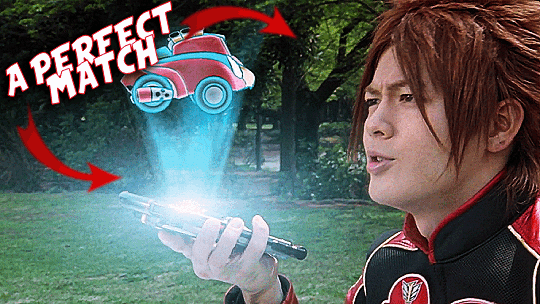

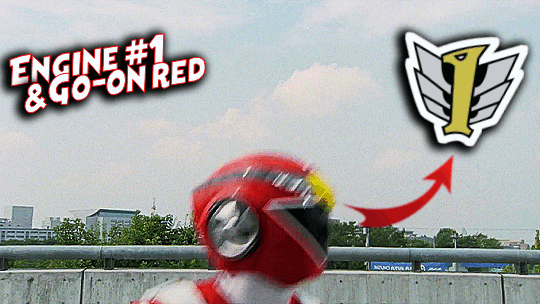

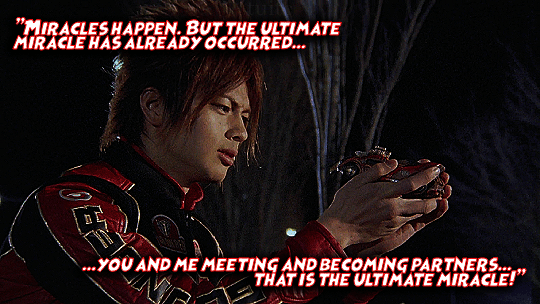
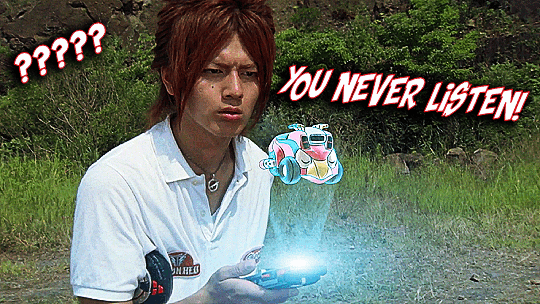
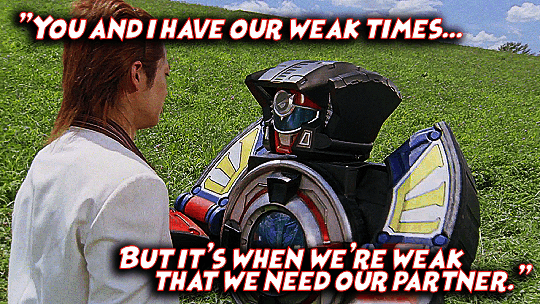
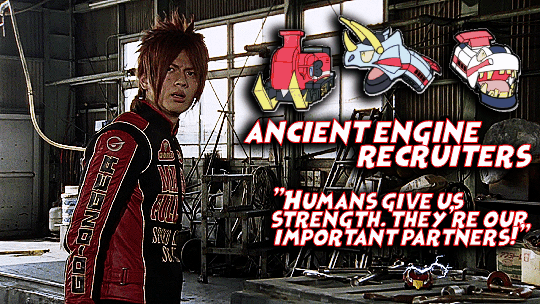
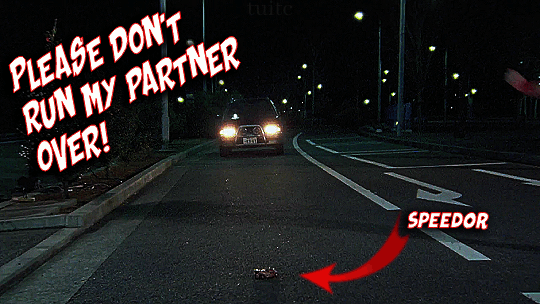
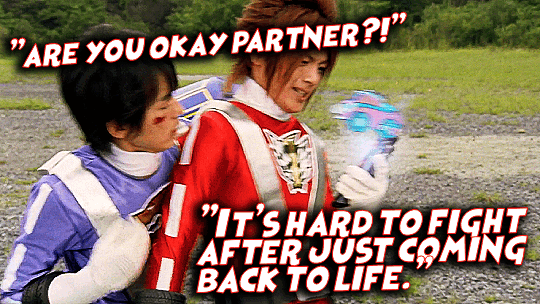
You're My Important Partner→Sōsuke Esumi & Speedor
#engine sentai go-onger#engine sentai go onger#go onger#go-onger#go-on red#go on red#esumi sosuke#sosuke esumi#speedor#tokuedit#please do not repost#umbrella.edits#umbrella.gifs#umbrella.posts#gifs.ymip#super sentai#translation for quotes: ga-earthly#only things with quotation marks are actual quotes#i was going to post these sets with just plain gifs but i didn't like it#so i went through to edit the gifs to make the set more fun
49 notes
·
View notes
Video
youtube
Are you ready for some Deep Sam Flam lore?
...Well, kind of?
I have started a project to compile as many Samurai Flamenco quotes as possible and put them in a Twitter text bot. This is partially for my own amusement, but also so I can collect Samurai Flamenco translations and put it in the attached linktree for cohesiveness. I am starting with quotes from the anime, which includes song lyrics.
...So, I came to a bit of a conundrum when I got to episode 4, Idol Devastation, and Mari blasted a song out of her hummer. Turns out that it is not an original song, but I made an Executive Decision to put it in the bot regardless. Except there’s no English translation. And Japanese lyric websites don’t have it properly transcribed. And it turns out that it requires hours and hours of research to properly decipher all of its religious references.
If you would like to just know the lyrics to the song, they are as follows:
Tera Zukkyun! Ai no Ryouhouji!
Before our love ripens, we’ll have an eternal sleep! Ryoyhou Temple!
Anye manye mane mamane cite carite shame
Shamitavi shamte mukte
It’s a miracle! Ryouhou Temple!
The shintai will help you, shining halo guidepost
Leave the prayers to me; the mutual love of one hundred shrine visits
Lotus Sutra, Chishaku, bodhisattva Manjushri, bhava!
This sutra is profound, complex, subtle, and treasured; worship!
You’re troubled, aren’t you? (Mt. Fuji kamikaze)
You’re in agony, aren’t you, aren’t you? (Shuriken tempura)
Right now, come come come take shelter (Unruly bonze)
Brain fragmentation
Temple buh-bam! Temple buh-bam!
The Ryouhou Temple of love love love love love!
Singing and studying and dancing love will fulfill you
The love love love love love of Hachiouji!
Your hypermutation! Ecstasy! Embrace sukhavati!
Syrupy Tro-Benten!
Sold lots tower over the cemetery’s shining headstone
We’ll give a warm welcome to even the most inexperienced
Bhava, bhava, sattva, sadhana, devote yourself to this sutra to attain bodhi!
Manjushri said the daughter of the dragon king Sagara did this year!
You’re anxious, aren’t you? (Pervert tsundere)
You’re forlorn, aren’t you aren’t you? (Tiny boobs, fatty cut sushi)
Right now, come come come take shelter (Nipples, decapitation)
Entering nirvana, reincarnation
Temple buh-bam! Temple buh-bam!
The Ryouhou Temple of love love love love love!
With my sparkling sadhana, attaining enlightenment, I’ll come into moksha!
The love love love love love of Hachiouji!
Your hypermutation! Ecstasy! Embrace sukhavati!
Syrupy Tro-Benten!
Eight years! (Eight years!) Eight years! (Eight years!) Eight years! (Eight years!) Innate prajna! (Love!)
Factor of life: form, factor of life: nature, factor of life: embodiment, factor of life: potency
Eight years! (Eight years!) Eight years! (Eight years!) Eight years! (Eight years!) Innate prajna! (Love!)
Factor of life: function, factor of life: primary cause, factor of life: secondary cause, factor of life: effect
Eight years! (Eight years!) Eight years! (Eight years!) Eight years! (Eight years!) Innate prajna! (Love!)
Factor of life: recompense, factor of life: recompense, factor of life: recompense, factor of life: recompense
Factor of recompense, factor of recompense, factor of complete fundamental whole
The Ryouhou Temple of love love love love love!
Singing and studying and dancing love will fulfill you
The love love love love love of Hachiouji!
Your hypermutation! Ecstasy! Embrace sukhavati!
Syrupy Tro-Benten!
Temple buh-bam! Temple buh-bam!
You’ll fall in love! Ryouhou Temple!
However, if you want a big deep dive on the lyrics, here it is:
This is the theme song for Ryouhou Temple, a Buddhist temple in western Tokyo. The temple is notable for being...moe, to the degree that it’s nicknamed moeji (moe temple). The reason for this is that it features a moe-fied version of Benzaiten. Benzaiten is a Buddhist goddess, often shown with a biwa.
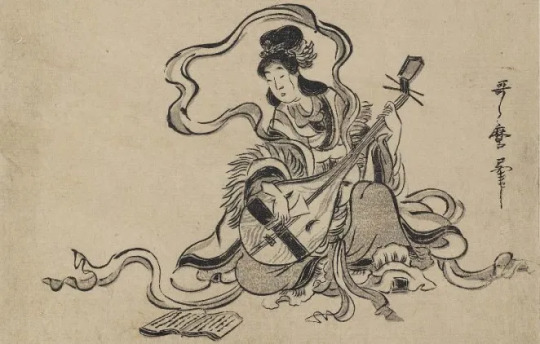
She is the Japanese version of Saraswati, the Hindu goddess of music and wisdom.

The moe version of which is Tro-Benten.

This video is a pretty good summary of the surreal nature of Ryouhouji. With that out of the way, here’s a breakdown.
恋の実ったその先は二人で永眠!了法寺ー!
Koi no minotta sono saki wa futari de eimin! Ryouhouji!
Before our love ripens, we’ll have an eternal sleep! Ryouhou Temple!
“Eternal sleep” or “eimin” here is actually a phrase in Christianity, especially the Orthodox Church. It is a euphemism for death in the Bible.
安爾 曼爾 摩禰 摩摩禰 旨隷 遮梨第 貝余
Ani mani mane mamane shire sharite shamya
Anye manye mane mamane cite carite shame
This is sanskrit, and each of these words is a spell. Technically, each kanji character has meaning, but they serve more of a phonetic sense than a semantic one. Here is the meaning of each of these spells (per this link)
Anye: mysterious
Manye: pondering
Mane: mindfulness
Mamane: serenity in mind
Cite: eternity
Carite: religious practice
Shame: tranquility
貝余履 多王韋 羶帝 目帝
Shabi tai sentei mokutei
Shamitavi shamte mukte
Shamitavi: non-attachment
Shamte: inexpressibly serene silence
Mukte: emancipation
ご利益あります!了法寺!
Goryaku arimasu! Ryouhouji!
It’s a miracle! Ryouhou Temple!
お助けします御神体輝く後光の道しるべ
Otasuke shimasu goshintai kagayaku gokou no michishirube
The shintai will help you, shining halo guidepost
A shintai is a physical object worshipped at temples that has a spirit in it.
They can have a lot of different forms; here is an example:

However, this is the shintai at Ryouhouji:
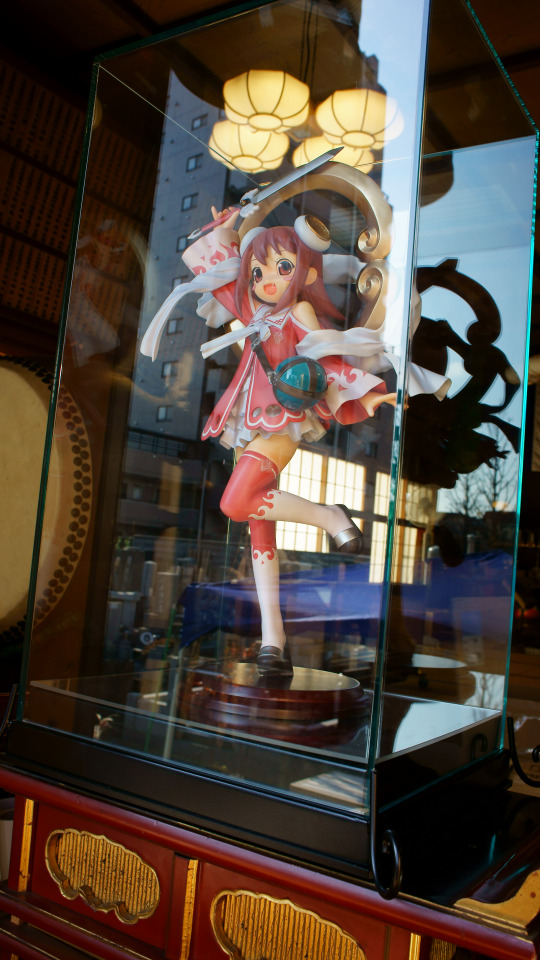
恋の願いはお任せよお百度参りで両思い
Koi no negai wa omakase yo ohyaku domairi de ryouomoi
Leave the prayers to me; the mutual love of one hundred shrine visits
Hyakudomairi, or one hundred shrine visits, is a practice in Shinto. It’s what it sounds like - visiting a shrine to pray one hundred times.
妙 法華経 智積 菩薩 問文殊 師利言 有!
Myou hougekyou chishaku bosatsu monmonju shirigon u!
Lotus Sutra, Chishaku, bodhisattva Manjushri, bhava!
In general, sutras are canonical scriptures within Buddhism. Buddhism has two main branches - Mahayana and Theravada. Mahayana Buddhism is popular in East Asia, and the Lotus Sutra is one of the most influential texts within that branch. More specifically, it is used for the Nichiren and Tendai sects of Buddhism. Here is a link with a basic breakdown of the concept.
Chishaku(-in) is a Buddhist temple in Kyoto. It is the headquarters of Chisan-ha sect of Shingon Buddhism. That is a sub-section of Vajrayana Buddhism, spread from India to East Asia. In turn, Vajrayana is part of Mahayana Buddhism.
The person for whom the temple was named, Chishaku, is also known as Wisdom Accumulated. He is the oldest son of Great Universal Wisdom Excellence Buddha.
A bodhisattva is someone who is on the path to Buddhahood.
Manjushri is a bodhisattva associated with prajna (wisdom) in Mahayana Buddhism.
Bhava is a term meaning earthly tendencies, birth, and production. Bhava is one of the twelve links of Pratityasamutpada, originally taught by Great Universal Wisdom Excellence. Pratityasamutpada is a key doctrine within Buddhism which emphasizes the connectiveness of all phenomena (dharma).
此経 甚 深 微妙 諸経 中 宝 世所 希有 拝!
Shigyou jinjin mimyou shochou chuu hou sesho keu hai!
This sutra is profound, complex, subtle, and treasured; worship!
This is a reference to Chapter 12 of the Lotus Sutra, in which Chishaku asks Manjushri if one can quickly obtain Buddhahood through practicing the Lotus Sutra.
悩んでいるのでしょう(フジヤマ カミカゼ)
Nayande iru no deshou (fujiyama kamikaze)
You’re troubled, aren’t you? (Mt. Fuji kamikaze)
English-speakers probably know kamikaze in terms of World War II. However, it is also a reference to a typhoon thought to protect Japan from a Mongolian invasion in the 13th century.
...As a side note, the bits in parentheses are sung in an American accent. Make of that what you will.
悶えているのでしょでしょ(シュリケン テンプラ)
Modaete iru no desho desho (shuriken tenpura)
You’re in agony, aren’t you, aren’t you? (Shuriken tempura)
Shuriken is a fairly well-known term, but it is a star-shaped concealed weapon.

Tempura is a popular Japanese dish of meat or vegetables fried in batter (would recommend).

今すぐ来て来て来て駆け込んで(ボウズ ノホウズ)
Ima sugu kite kite kite kakekonde (bouzu nohouzu)
Right now, come come come take shelter (Unruly bonze)
A bonze is a Japanese or Chinese Buddhist monk. In common speech, you’ll often hear “bouzu” as a casual way to refer to boys. This is a reference to the word “bonze.”
脳みそフラグメンテーション
noumiso furagumenteeshon
Brain fragmentation
テラズッキュン寺ズッキュン
Tera zukkyun tera zukkyun
Temple buh-bam! Temple buh-bam!
Tera means temple. The first tera in this is in katakana, and the second is in kanji. I translated them the same, but the first tera may mean the prefix tera-. Terabyte is an example; you could see this line as a SUPER zukkyun.
Zukkyun is a sound effect for gun shots, like “pew pew,” “bang bang,” etc. However, it also is used as a sound effect for rapidly falling in love with something. You can think about it similarly to how one is shot with Cupid’s arrow. Zukkyun can be a sound effect for actual romantic love, or just casual internet talk for indicating you really like something.
愛の愛の愛の愛の愛の了法寺!
Ai no ai no ai no ai no ai no ryouhouji!
The Ryouhou Temple of love love love love love!
歌って学んで踊って恋が成就します
Uttate manande odotte koi ga jouju shimasu
Singing and studying and dancing love will fulfill you
愛の愛の愛の愛の八王子!
Ai no ai no ai no ai no hachiouji!
The love love love love love of Hachiouji!
Hachiouji is where Ryouhouji is located, in West Tokyo.
you超変!有頂天!朴楽抱きしめてね
You chouhen! Uchouten! Gokuraku dakishimete ne
Your hypermutation! Ecstasy! Embrace sukhavati!
This is a reference to Pure Land Buddhism, or Amidism, which is a branch of Mahayana Buddhism. Amitabha is the principal Buddha of this, and the basic idea is that the world is corrupt, so people should wish to be reborn in the Pure Land instead. Sukhavati is the western part of the Pure Land.
とろとろとろ弁天!
Torotoro torobenten!
Syrupy Tro-Benten!
分譲しますぼっち墓地輝く墓石そびえ立つ
Bunjou shimasu bocchi bochi kagayaku boseki sobietatsu
Sold lots tower over the cemetery’s shining headstone
未経験者も大歓迎お一人様でもお気軽に
Mikeikensha mo daikangei ohitorisama demo okigaru ni
We’ll give a warm welcome to even the most inexperienced
頗有頗有衆生 勤加精進 修行 此経 速得仏不
Hau hau shuujou gonka shoujin shugyou shigyou sokutoku bubbu
Bhava, bhava, sattva, sadhana, devote yourself to this sutra to attain bodhi!
In Samkhya, one of the six schools of Hindu philosophy, sattva is one of three gunas. Gunas are the modes of existence (traits) that one may have, and sattva means the quality of balance. It is connected with purity, and serenity.
Sadhana is essentially a disciplined ritual used to obtain one’s goals. The classic trope of standing under a waterfall is an example of Japanese Buddhist sadhana.
Bodhi essentially means “awakening,” often in reference to enlightenment.
文殊 師利 言言有有 裟 竭 羅龍王 女 年始
Monju shiri gongon uu shakatsura ryuu ounyo nenshi
Manjushri said the daughter of the dragon king Sagara did this year!
This is another reference to Chapter 12 of the Lotus Sutra. When Wisdom Accumulated/Chishaku asks if someone can attain Buddhahood through studying the Lotus Sutra, Manjushri mentions that the dragon princess already has.
不安があるのでしょう(ヘンタイ ツンデレ)
Fuan ga aru no deshou (hentai tsundere)
You’re anxious, aren’t you? (Pervert tsundere)
Anime fans probably know this, but tsundere is a portmanteau of tsun tsun, and dere dere. Tsun tsun is basically standoffishness, and dere dere is having a sweet demeanor. A tsundere is a character/person that blends these traits in some way. They are usually either sweet, but become irritable, or irritable by default, then become sweet under some circumstances.
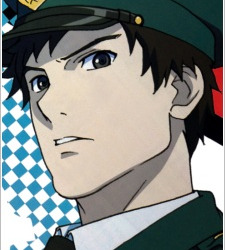
(Hidenori “It’s Not Like I’ll Marry You Or Anything B-baka!” Goto is a tsundere.)
心細いのでしょでしょ(ヒンニュウ スシトロ)
Kokorobosoi no desho desho (hinnyuu sushitoro)
You’re forlorn, aren’t you aren’t you? (Tiny boobs, fatty cut sushi)
今すぐ来て来て来て駆け込んで(チクビ ウチクビ)
Ima sugu kite kite kite kakekonde (chikubi uchikubi)
Right now, come come come take shelter (Nipples, decapitation)
成仏リインカーネーション
Joubutsu riinkaaneeshon
Entering nirvana, reincarnation
Nirvana is a concept in Buddhism (and other Indian religions) that means the release from reincarnation. It is the ultimate goal for salvation.
テラズッキュン寺ズッキュン
Tera zukkyun tera zukkyun
Temple buh-bam! Temple buh-bam!
愛の愛の愛の愛の愛の了法寺!
Ai no ai no ai no ai no ai no ryouhouji!
The Ryouhou Temple of love love love love love!
修行でピカって悟って解脱しちゃいます
Shugyou de pikatte satotte gedatsu shichaimasu
With my sparkling sadhana, attaining enlightenment, I’ll come into moksha!
Moksha is the release from reincarnation. The difference between this and nirvana vary by religion and branch.
愛の愛の愛の愛の八王子!
Ai no ai no ai no ai no hachiouji!
The love love love love love of Hachiouji!
you超変!有頂天!極楽抱きしめてね
You chouhen! Uchouten! Gokuraku dakishimete ne
Your hypermutation! Ecstasy! Embrace sukhavati!
とろとろとろ弁天!
Torotoro torobenten!
Syrupy Tro-Benten!
八歳!(八歳!) 八歳!(八歳!) 八歳!(八歳!) 智慧利根!(愛!)
Hassai! (Hassai!) Hassai! (Hassai!) Hassai! (Hassai!) Chie rikon! (Ai!)
Eight years! (Eight years!) Eight years! (Eight years!) Eight years! (Eight years!) Innate prajna! (Love!)
“Eight years” is a reference to the fact that Sagara’s daughter was only eight when she attained Buddhahood.
如如是相 如如是性 如如是体 如如是力
Nyonyozesou nyonyozeshou nyonyozetai nyonyozerisa
Factor of life: form, factor of life: nature, factor of life: embodiment, factor of life: potency
This is a reference to the Buddhism Ten Factors of Life. Interestingly, these factors were not originally in the Sanskrit text. They were added by the translator, Kumaraju, in the 5th century.
八歳!(八歳!) 八歳!(八歳!) 八歳!(八歳!) 智慧利根!(愛!)
Hassai! (Hassai!) Hassai! (Hassai!) Hassai! (Hassai!) Chie rikon! (Ai!)
Eight years! (Eight years!) Eight years! (Eight years!) Eight years! (Eight years!) Innate prajna! (Love!)
如如是作 如如是因 如如是縁 如如是果
nyonyozesa nyonyozein nyonyozeen nyonyozeka
Factor of life: function, factor of life: primary cause, factor of life: secondary cause, factor of life: effect
八歳!(八歳!) 八歳!(八歳!) 八歳!(八歳!) 智慧利根!(愛!)
Hassai! (Hassai!) Hassai! (Hassai!) Hassai! (Hassai!) Chie rikon! (Ai!)
Eight years! (Eight years!) Eight years! (Eight years!) Eight years! (Eight years!) Innate prajna! (Love!)
如如是報 如如是報 如如是報 如如是報
nyonyozehou nyonyozehou nyonyozehou nyonyozehou
Factor of life: recompense, factor of life: recompense, factor of life: recompense, factor of life: recompense
八歳!(八歳!) 八歳!(八歳!) 八歳!(八歳!) 智慧利根!(愛!)
Hassai! (Hassai!) Hassai! (Hassai!) Hassai! (Hassai!) Chie rikon! (Ai!)
Eight years! (Eight years!) Eight years! (Eight years!) Eight years! (Eight years!) Innate prajna! (Love!)
如如報如 如あ如報 如如是本末究竟等
nyonyohounyo nyoanyohou nyonyoze honmatsukukyoutou
Factor of recompense, factor of recompense, factor of complete fundamental whole
愛の愛の愛の愛の愛の了法寺!
Ai no ai no ai no ai no ai no ryouhouji!
The Ryouhou Temple of love love love love love!
歌って学んで踊って恋が成就します
Utatte manande odotte koi ga jouju shimasu
Singing and studying and dancing love will fulfill you
愛の愛の愛の愛の八王子!
Ai no ai no ai no ai no hachiouji!
The love love love love love of Hachiouji!
you超変!有頂天!極楽抱きしめてね
You chouhen! Uchouten! Gokuraku dakishimete ne
Your hypermutation! Ecstasy! Embrace sukhavati!
とろとろとろ弁天!
Torotoro torobenten!
Syrupy Tro-Benten!
テラズッキュン寺ズッキュン
Tera zukkyun tera zukkyun
Templue buh-bam! Temple buh-bam!
恋ズッキュン了法寺!
Koi zukkyun ryouhouji!
You’ll fall in love! Ryouhou Temple!
....So, why the hell is this in Samflam?
Good question! I can only give some educated guesses.
1. Its chaotic, yet cute nature fits Mari well. I mean...what line better describes her than “chikubi uchikubi”?
2. The repetition of ai no ai no ai works well when compared to the 2nd OP of SamFlam, Ai Ai Ai. In fact, the ai no ai no ai no part is really the only part that appears in SamFlam itself. It could be coincidence, as “love” is a really common word in moe songs, but it is interesting.
3. Might be a stretch, but the song itself is about the juxtaposition between old traditions and modern pop culture. This fits well with a lot of SamFlam’s themes of growing up. Additionally, Masayoshi’s whole shtick is about combining old traditions (his Japanese samurai and Spanish flamenco dancer ancestors) and applying it to...tokusatsu.
I really appreciate if you’ve read this far - I can’t begin to describe the amount of work that went into this. I hope to translate more SamFlam stuff in the future, so stay tuned!
49 notes
·
View notes
Photo

“38. A hall I saw, | far from the sun,
On Nastrond it stands, | and the doors face north,
Venom drops | through the smoke-vent down,
For around the walls | do serpents wind.
39. I saw there wading | through rivers wild
Treacherous men | and murderers too,
And workers of ill | with the wives of men;
There Nidhogg sucked | the blood of the slain,
And the wolf tore men; | would you know yet more?”
Voluspa, stanzas 38 and 39, Poetic Edda.
The Voluspa is the first poem in the Poetic Edda compiled in the Codex Regius in the 13th century. This Icelandic codex contains a collection of poems in Old Norse which some scholars argue are retelling stories from the 10th century or even earlier times. Written in the 13th century, discovered in 1643 and translated several times over the years, one should approach it with an open but critical mind. Among the several Christian motifs we can find in not just the Poetic Edda but in other sources of Norse mythology too, the quoted stanzas above seem to be the most problematic to the point of being directly discarded at times under the idea that it's a fully Christian addition to the poem. My argument is that past the Christian gloss, between its lines, and with support from archaeological evidence (and even biology), we can get an idea of what Christianism concealed and distorted from pre-Christian Norse belief.
The very first lines describe the hall and its situation, far from the sun, underground; facing north, to the unknown; and snakes crawling around, surrounded by primal energies of chaos. Nastrond (Corpse strand) is the shore in Hel's realm where the corpses arrive and are eaten and tortured by wolves and snakes, Nidhogg, a big scary dragon, sucking their blood... this is the place and punishment for oath-breakers and murderers. This is the equivalent to Christian hell. However, if we look beyond the Christian filter, something different starts to appear. The hall becomes a burial mound, the snakes become worms eating the rotten flesh, transforming the corpse and freeing the soul. The wolves become scavengers that may sneak into the burial chamber but also guardians of Hel's gates and guides for the dead in their journey, helping them to detach from their physical life and moving to the Afterlife. The venom and smokes become the juices and gases resulting from the decomposition process. Further to this, the Norse associated death with the colour blue, especially darker tones. Corpses turn bluish during decomposition just before they swell with gas and explode.
Many scholars have tried to figure out what was the Norse Afterlife like and there's no definitive conclusion. To further complicate the matter the ancient Germanic tribes seemed to have a very different conception of the soul/self from what we usually find in mainstream religions. Rather than identifying body and soul, they would believe in several parts making up the self. That could explain why in Norse sources a deceased could become an elf and/or move to an Afterlife in the hall of some deity. Different parts of the self had different functions and they would separate after death. I believe it's this process of final separation of the different soul/self parts and their transformation(s) that these stanzas and archaeological evidence can help us to unravel.
People buried in burial mounds, when not previously cremated, were placed in a fetal position. This is suggestive of a belief in the deceased going back to the Mother, back to the source, after death. Burial mounds were also shaped to resemble a pregnant belly protruding from the earth's surface, and serpent decorative motifs and even real snakes and their eggs have been found inside them. If we take into account serpents are symbols of feminine sexuality, of the life force of the Earth, death, and transformation (regenerative chaos), and some very suggestive stones, such as the Smiss stone in Sweden, also called the “snake witch” stone, depicting a woman holding two snakes and sitting with her legs apart. Or the rune stones which were memorials to the dead dated from early Christian Scandinavia but also depicting snake motifs. If we take all this into account, we don't only find a positive symbolism for the snake connected to the dead, but we can also move beyond the decomposition of the corpse, to the next stage, being reborn in the Afterlife, being transformed. The dead were buried inside the Mother's womb and they found themselves swimming in an aquatic, amniotic, environment, back to the primal (re)generative waters of Hvergelmir. Nidhogg chewing Yggdrasil's roots is a very evocative image of the umbilical cordon being connected to the placenta. At the same time, we can see Yggdrasil, the world tree, in the placenta and the umbilical cordon too.
We know the goddess Hel was the personification of death, she ruled the Norse underworld and had power over all the nine worlds. She's described as being half alive, rosy and healthy, and half blue, dark, dead and putrefact. We can see both faces of life/death reflected in Hel and we should notice she's the sister of Jormungandr, the giant snake that encircles Midgard, the Earth, and the giant wolf Fenrir. Some scholars argue Jormungandr is the same as Nidhogg, and Fenrir the same as Garmr, the wolf that guards Hel's gates. It's quite evident Scandinavians had a Great Mother Goddess of life and death* before the Viking Age, before the rise of the warrior culture and, perhaps, even through it. The demeaning of such a goddess most likely happened before the conversion of Scandinavia to Christianism. The new religion, probably, just finished the demonization of the feminine as a whole. In this way the welcoming earthly womb became a Christian hell full of monsters and suffering.
To sum up, despite the Christian influence and bias at the time of the collection of the old Norse myths, stanzas 38 and 39 from the Voluspa contain valuable imagery and information with regards of the ancient Norse conception and understanding of death. This understanding was one of finding life within death, and death within life. Closely related and never fully separated, opposite twins in a sense. Life and death were seen as manifestations of chaos. Nidhogg and Hvergelmir are forces of chaos and as such their powers are not solely destructive but creative and regenerative too. The fact the very same symbols and images of putrefaction outlined in the stanzas are also symbols and images of gestation and birth just proves this dichotomy. I believe it's safe to say death was seen as a transformational process of the self. The body would rot and nourish the soil in an inverted gestation freeing the soul/self parts that had attached to the body during the first gestation and at the moment of birth, these parts then would be transformed, even birthed again, according to their functions or nature.

*As an example, the Smiss stone, dated from ca. 600 AD, depicts the Great Goddess, primal mother with power over the three worlds represented by the animals above her, the fertility boar from the middle world (Earth), the wolf from the underworld and the eagle from the sky. The snakes on her hands are a symbol of her power over the life force of the Earth and all living beings.
**Image by Phoenix Folk Artist (Pinterest).
11 notes
·
View notes
Photo



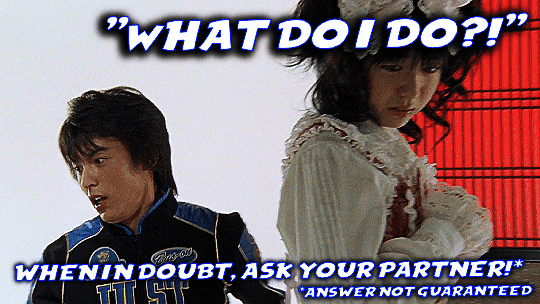


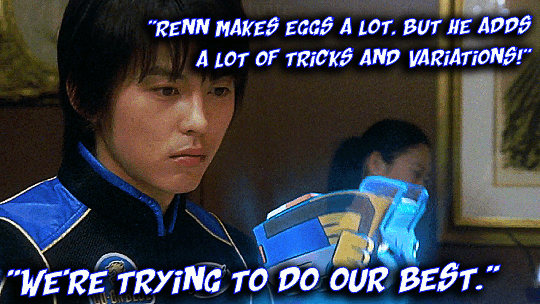



You're My Important Partner→Renn Kōsaka & Bus-on
#engine sentai go-onger#engine sentai go onger#go-onger#go onger#super sentai#renn kosaka#kosaka renn#bus-on#go-on blue#go on blue#tokuedit#please do not repost#umbrella.edits#umbrella.gifs#umbrella.posts#this one took a while bc i kept changing what i wanted to include#translation for quotes: ga-earthly#only things with quotation marks are direct quotes#gifs.ymip#the best blue argue with the wall#one of my favorite guys in all of the sentai i've seen#i miss him every day#💙💙💙
46 notes
·
View notes
Photo
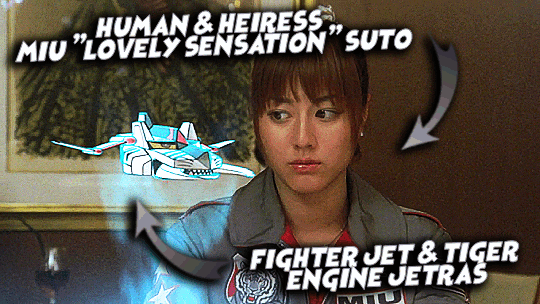



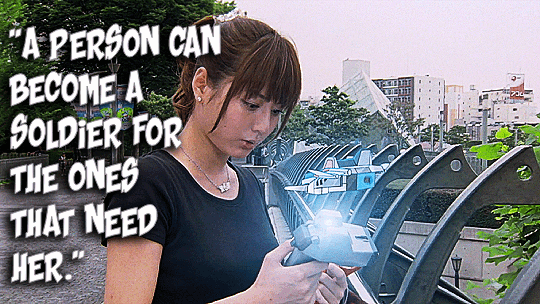

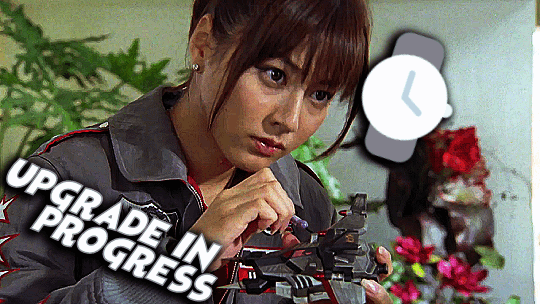



You're My Important Partner→Miu Sutō & Jetras
#engine sentai go-onger#engine sentai go onger#go-onger#go onger#super sentai fanart#miu suto#suto miu#jetras#go-on silver#go on silver#tokuedit#please do not repost#umbrella.edits#umbrella.posts#umbrella.gifs#translation for quotes: ga-earthly#only things with quotation marks are actual quotes#gifs.ymip
33 notes
·
View notes
Photo
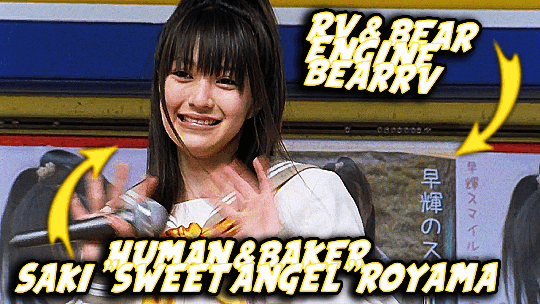






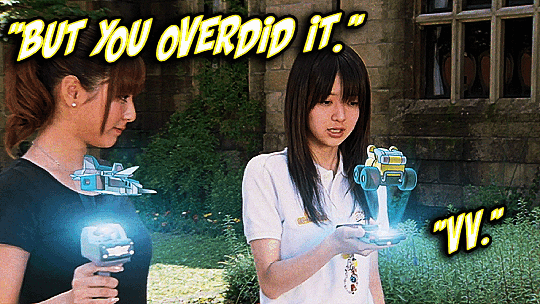
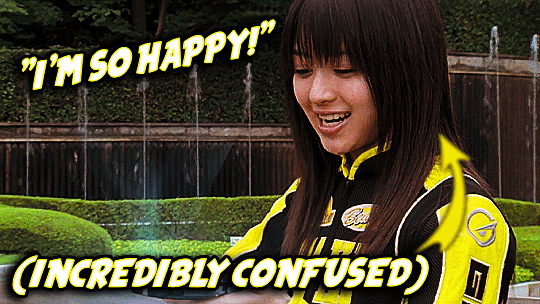

You're My Important Partner→Saki Rōyama & BearRV
#engine sentai go-onger#engine sentai go onger#go-onger#go onger#saki royama#royama saki#bearrv#go-on yellow#go on yellow#super sentai#tokuedit#please do not repost#umbrella.edits#umbrella.gifs#umbrella.posts#gifs.ymip#translation for quotes: ga-earthly#only things within quotation marks are direct quotes#took a while to do this one bc there's not a lot of shots with just saki and bearrv#and when they're talking to each other#they shots go back and forth between them
31 notes
·
View notes
Photo
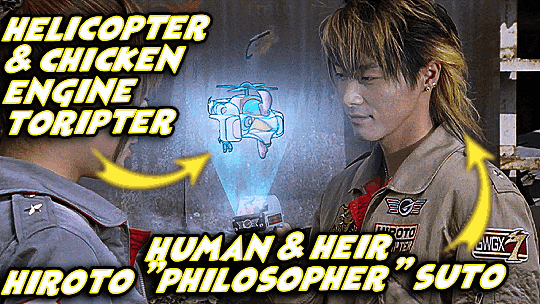
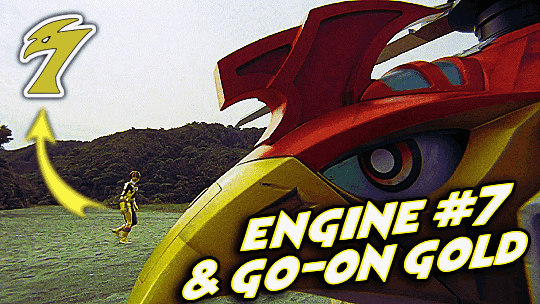
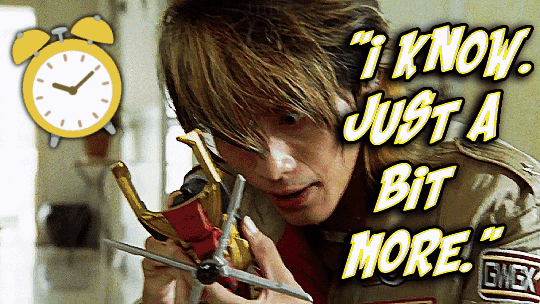

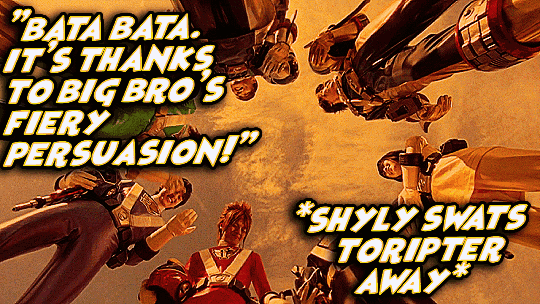


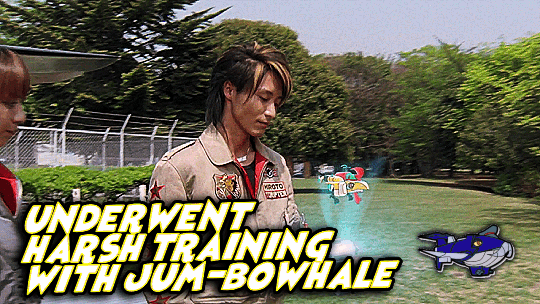
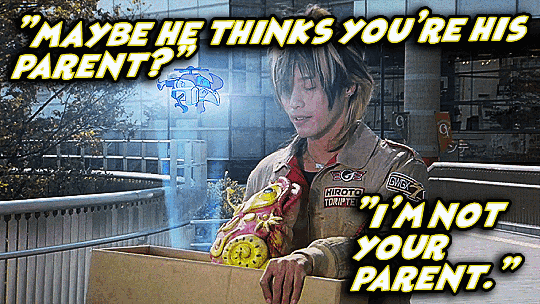

You're My Important Partner→Hiroto Sutō & Toripter
#engine sentai go-onger#engine sentai go onger#go-onger#go onger#hiroto suto#suto hiroto#go-on gold#go on gold#toripter#super sentai#tokuedit#please do not repost#umbrella.edits#umbrella.gifs#umbrella.posts#translations for quotes: ga-earthly#gifs.ymip#only things in quotation marks are direct quotes
43 notes
·
View notes
Photo

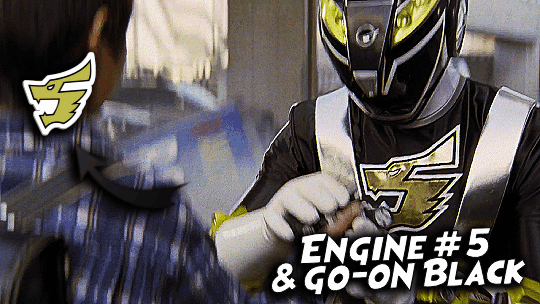


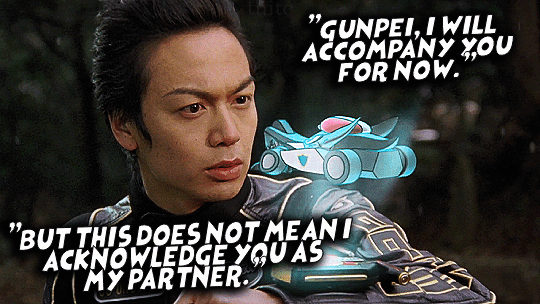
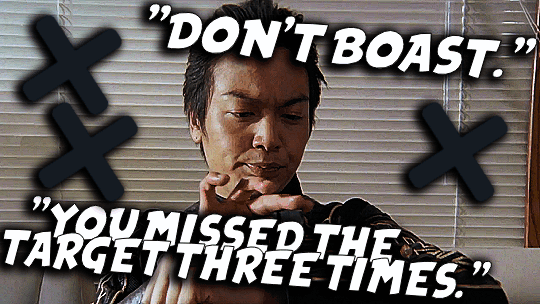

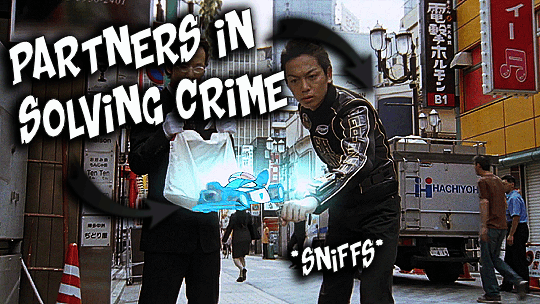
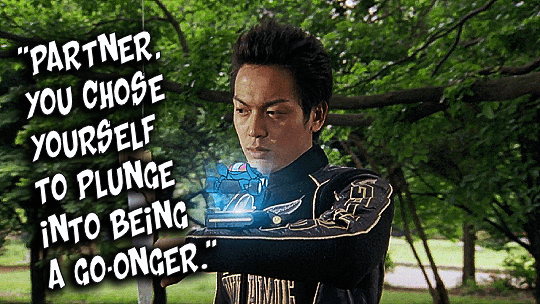

You're My Important Partner→Gunpei Ishihara & Gunpherd
#engine sentai go-onger#engine sentai go onger#go-onger#go onger#gunpei ishihara#ishihara gunpei#gunpherd#super sentai#tokuedit#please do not repost#umbrella.posts#umbrella.edits#umbrella.gifs#translations for quotes: ga-earthly#only things in quotation marks are direct quotes#go-on black#go on black#gifs.ymip
25 notes
·
View notes